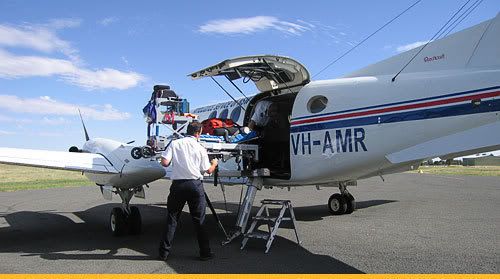Air
ambulances can be broadly classified into two basic categories- the ones with a
rotary wing and the others with a fixed wing.
The
rotary wing ambulance is commonly called a helicopter. They are often used to transfer
patients from one medical facility to another. They are also deployed to
dispatch medical teams to crisis situations. The fixed wing ambulances can
commonly be called small jets. They are mostly used for long distances of
travel.
Let’s
look at both these ambulances in detail –
1. The Rotary Wing Ambulances
The
helicopter can be used in many situations that require immediate attention and
action. They are usually used for transporting patients over short distances. They
can also be used to transport a patient from a crisis situation to a hospital.
- Their main advantage over the fixed wing ambulances is the fact that they can be landed practically anywhere. The spectrum of places of where they can be sent to pick up patients is very wide. They can be made to land over pavements, roads, in fields and even in parks. Hence, they allow the medical teams to have the closest access to the patient in trouble.
- However, travel medical assistance company’s only use them for local distances, as they are perfect for emergency situations.
2. The Fixed Wing Ambulances
The
fixed wing air ambulance works on the theory of powered by a jet engine
or driven by a propeller. In terms of mechanic they are business jets or lear
jets that have been converted into air ambulances. They are equipped with all
latest medical equipment and can accommodate the patient and the medical crew.
- They can be used to transfer patients for long distances and even overseas. A propeller driven turboprops may also be deployed for exceptionally long distances.
- They are often used in the rural districts of United States and Australia, where people have limited access to medical facilities.
- Their interiors are spacious and can carry medical escorts and flight nurses
- They do not need to stop often for refueling.
- They can also be flown in bad weather where a helicopter would be unable to take off.








 Facebook
Facebook
 Twitter
Twitter Google+
Google+
0 comments:
Post a Comment